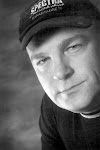Every image needs to have a point of interest - a main focal point that is supported by the rest of the image. For example, in a head and shoulders portrait, the main focal point will usually be the eyes. In a full length portrait, the main focal point will usually be the face. It is very common for a new photographer to want to place the main focal point right in the centre of the image. In most cases, this will not be the most effective placement of the subject.
First seen in paintings around 1797, the rule of thirds has become the most common compositional rule for subject placement within a frame. The rule of thirds divides the frame into 9 sections by drawing lines across the frame at one third intervals both horizontally and vertically. By placing the main focal point where two of the lines intersect will almost always create a more powerful composition than having the subject placed in the centre of the frame. So, when you create a head and shoulders portrait, the eyes should land on one of the cross points. When you have a larger subject, such as a full length portrait, the point of interest can be placed on one of the lines. The key is to have your main point of interest on one of the thirds, and where the lines cross will be the highest impact points.
The intersections of the lines are called Nodal Points. When someone looks at an image, their eye flows from left to right, bottom to top to bottom, passing through the nodal points in the order that they are numbered in the diagram. The eye will stop briefly at each nodal point but will be attracted to stay longer only if there is a reason to. Placement of your subject on specific nodes can create some very interesting dynamics.
If your subject is placed on nodal point 1, the eye will be drawn to stop there. However, your brain will want to continue its journey through the image. This will cause tension and stress, translating into a sensation of tension and stress in your image. Nodal point 4 will do the opposite. Because the mind has finished its journey through the image, it is comfortable to rest here before exploring the image again or moving out of the frame. Hence a sense of calm is given to the image.
Nodal point three will give a similar sense of calm but the subject will have more power, control, or importance in the image. Nodal point 2 will have a similar sense of tension as nodal point 1 but the subject will have a better sense of power, control, or importance in the image.
Here are some tips when using the rule of thirds for portrait photography.
- The eyes are the focal of a head and shoulders portrait. Have them on the nodal point 2 or 3
- In a full length portrait, the head and eyes should be on the upper 3rd line
- In a 3/4 length portrait, the head is the point of interest and should be in the 2nd or 3rd nodal point
- Image flow of the main subject should have the viewers eyes moving back into the image






No comments:
Post a Comment